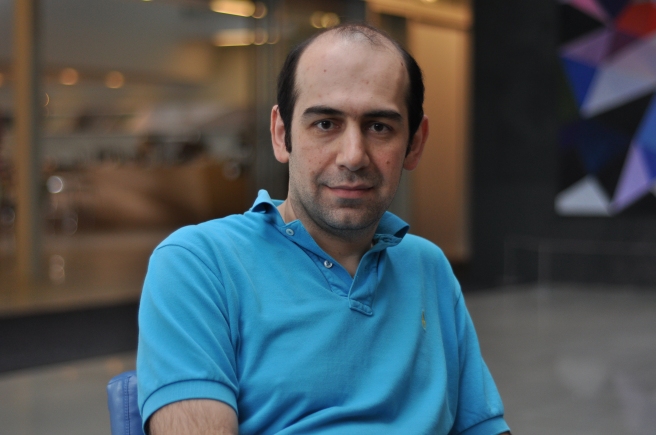 From Suzan Mazur at Oscillations, an interview with Iranian-born astrophysicist Niayesh Afshordi:
From Suzan Mazur at Oscillations, an interview with Iranian-born astrophysicist Niayesh Afshordi:
Niayesh Afshordi on Holographic Universe Media Spin & the Iranian Brain Drain
Suzan Mazur: How close is the goal of combining Einstein’s theory of relativity and quantum physics? Something Kostas Skenderis at the University of Southampton has described as a new paradigm for physical reality.
Niayesh Afshordi: We don’t know. Physicists have been chasing this goal for the past 80 years. We’d like to think that we’re closer than before. There have been new insights, theoretical and observational insights. But whether those are real, it’s difficult to say.
Suzan Mazur: Your holographic universe research has been widely touted as “the first observational evidence that our universe could be a vast and complex hologram.” Would you say that that is an accurate description?
Niayesh Afshordi: I think that’s a little bit of an exaggeration. It is the first possible holographic description of our observed universe. There is evidence but it’s not necessarily very strong evidence.

…
For practical reality of our everyday life, three dimensions seems to be sufficient and accurate. But for the fundamental reality, it’s very hard to tell and we don’t know. We don’t really have access to the fundamental reality of space and time. That’s the question of quantum gravity, the question that has eluded us for the past 80 years. What is the fundamental reality of space and time? There are various theories but there is no definite conclusion about that. More.
He concludes, refreshingly, with an appeal to avoid intense attachment to any one theory but rather let data decide.
See also: “Substantial evidence” claimed for universe as a hologram
and
Cosmology: The Big Bang was a mirage from a collapsing higher-dimensional star?